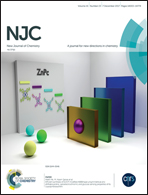Abstract
An Alpha Shift Correlation (ASC) method is used to assess quantitatively NMR shielding effects in a series of halogen derivatives of closo-borane dianions, [Xm-BnHn−m]2−. There is a simple linear correlation between the universal αref shifts and those induced by the substituent X in all positions of the closo borane cluster: Δδ(11B) = k·αref (where Δδ = δs − δp and subscripts s and p denote the substituted and parent derivatives, respectively; k = correlation slope). The sensitivity of the chemical shift in a given cage position to X-changes is defined by the g factor (g = gradient = k × 102). The ASC approach revealed that the α-deshielding effect in the monosubstituted anionic [X-BnHn−1]2− series decreases in the order of n: 6 > 12 > 10 > 9, and is dependent on the cage type and electron density at the substituted vertex. The sensitivity (g) in individual cluster positions to substituent changes decreases in the order α ≫ A > β > γ and is of approximately additive character. The most important feature of the unsubstituted sphere is the antipodal (A) effect showing a g-trend inversed to that observed at the substituted α-sites. Of interest are also the remarkable pseudo-A and trans-γ shielding effects in the 9- and 10-vertex anionic series.



 Please wait while we load your content...
Please wait while we load your content...